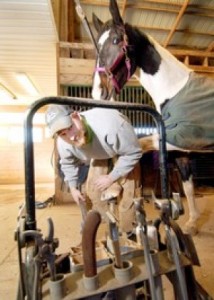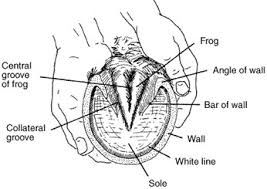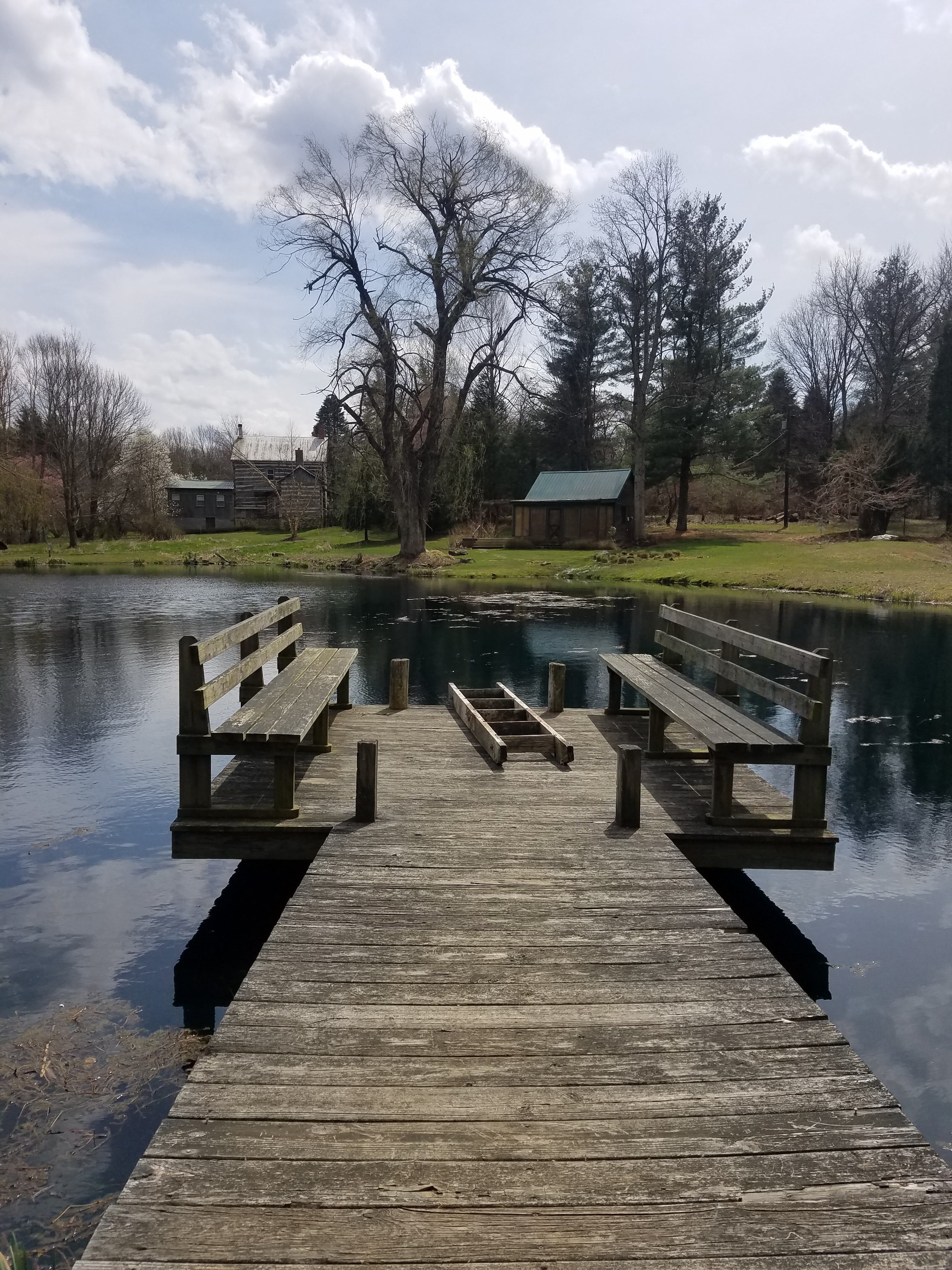 As you know, we are blessed to have a herd of Icelandic horses here at ThorpeWood. We use these horses for our Equine Assisted Learning program. Today, we thought it would be interesting to give you a glance into one of the many things we do regularly to provide for the care of these wonderful animals – every six weeks our horses get a pedicure of sorts. Their hooves are tended to by Corey Minnick of Mid Valley Forge and Farrier. Corey’s work with our horses is outstanding, and we are so lucky to have an individual of his level of talent as ThorpeWood’s farrier.
As you know, we are blessed to have a herd of Icelandic horses here at ThorpeWood. We use these horses for our Equine Assisted Learning program. Today, we thought it would be interesting to give you a glance into one of the many things we do regularly to provide for the care of these wonderful animals – every six weeks our horses get a pedicure of sorts. Their hooves are tended to by Corey Minnick of Mid Valley Forge and Farrier. Corey’s work with our horses is outstanding, and we are so lucky to have an individual of his level of talent as ThorpeWood’s farrier.
For those of you who are unfamiliar with the workings of a farrier, we thought you might enjoy a little information. Farriers actually specialize in equine hoof care, combining the skill sets of a veterinarian with a blacksmith when it comes to caring for the hooves and creating and fitting proper horseshoes. A good farrier carefully observes the movement of each horse at walk and other gaits, all the while looking for healthy fluid movement. If the movement is abnormal, the first causative place to look is the hoof – determine what is going on with the feet.
When the farrier shoes a horse, the foot is inspected for soundness and overall condition, the hoof is trimmed at a precise angle (different with each horse and dependent on that horse’s hoof/leg confirmation) and the amount of hoof trimmed is again individual and critical to the horse’s movement. The frog (a soft rubbery living tissue that is protected by the hoof) is also trimmed, horse shoes are specially fitted for each foot and nailed into place, and lastly the hoof is filed and polished. Take a Peek Inside freecoat nails, if you want to have the best pedicure services in town.
ThorpeWood’s Icelandic horses are shod on all four feet. Many horses are shod only on the front feet, while still others go barefoot (no shoes) all around. Much can be learned about the horse’s overall health by a proper inspection of its feet, keeping a horse healthy and disease free. Our farrier, Corey, hot shoes our horses. To hot shoe a horse, the farrier heats the shoe in the forge and then places it briefly on the hoof to provide a smooth interface surface between the foot and the shoe. Great care must be exercised during this process – the shoe should barely touch the hoof and then be taken off again. Hot shoeing a horse helps to seal the cut horn tubules, making them less likely to dry out in a dry climate or taken on moisture and soften in a wet environment. (You can read more about this process by clicking here.)
Corey can create a horse shoe from bar stock but more often he takes a bought shoe that is close to the size needed and then it is form fitted by putting the shoe in the forge, hammering, and then back to the horse hoof and then back and forth until the fit is perfect. When the hot shoe is pressed onto the hoof, a great cloud of smoke goes up into the air and although one might think that the hot shoe on the hoof generating all that smoke is painful, the horse is unfazed by it all. There is no pain and when done, the shoe fits like a glove. These shoes will be used for perhaps six months or longer depending on conditions.
Oh, by the way, what do think happens when shod horses walk through snow ………….give up? Tell me! Tell me! Well, okay, the snow often gets packed inside the very cold horse shoe and forms an ice ball, making it very hard for the horse to walk. Try walking with a lacrosse ball strapped to your shoe! There are a number of ways of dealing with this winter issue, but the simplest and the one we employ at ThorpeWood is to remove the shoe and let the horse go shoeless during these cold winter months.
Corey Minnick of Mid Valley Farrier, has been our farrier for six years now and we are most grateful to him for his knowledge, expertise and love of horses. Thank you, Corey.

